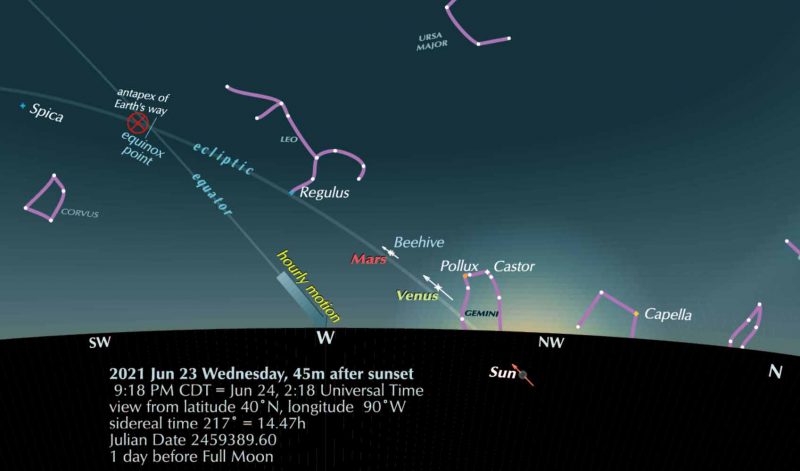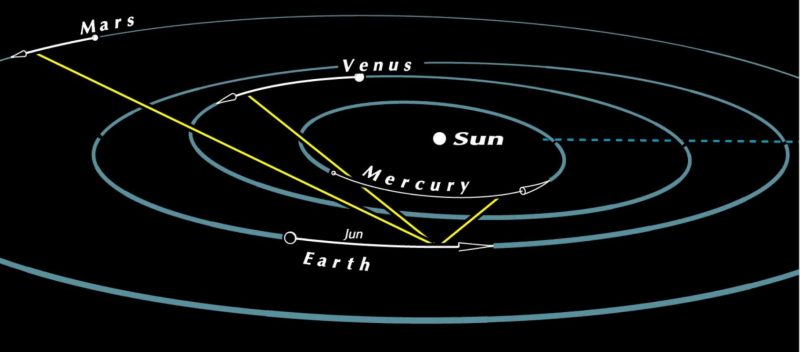
Originally published at Guy Ottewell’s blog on June 23, 2021. Used here with permission.
Planets and stars in June evening sky
In late June 2021, Mars is on top of the Beehive star cluster. The cluster is anciently known as Praesepe, or the “manger,” and lies in the middle of the dim constellation Cancer. This nearest of star clusters is also relatively dim and diffuse. It can be glimpsed with the unaided eye when higher in a dark sky. Binoculars or telescope will show it overwhelmed by Mars.
In the logarithmic scale used in astronomy, the magnitude of the cluster is 3.7 and that of the planet is now 1.8, which means that the light coming to us from Mars is nearly 6 times more.
Look closely at the chart above. As the broad arrow on the celestial equator shows, the ornaments of the western sky are slanting downward. An hour after the time of this chart (which is shortly after your local sunset), Venus will be below the horizon, the Twin stars Castor and Pollux of the constellation Gemini only about 1 degree above the horizon, and Mars 4 degrees above it.
The chart does not show the moon, now nearly full. At this time of night, the moon has just risen and is away over in the southeast, in Scorpius.
The “antapex of Earth’s way” is the direction away from which we are moving in our orbit. Being roughly 90 degrees from the sun, it has just passed the September equinox point. That’s because the sun has just passed the June solstice point.
The arrows through the moving bodies, including the sun, show their movement from 2 days before to 2 days after the time of the picture, in relation to the starry background. You can see that Venus is moving east faster, and Mars slower, than the sun. Both are beyond the sun, but Venus is moving out toward its greatest elongation (October 29). Meanwhile, from our point of view, Mars is falling back toward its conjunction behind the sun (October 8).
Meanwhile, from above the solar system

Bottom line: Two charts showing several planets of the inner solar system in June 2021. One looks toward the west after sunset, also showing several bright stars now descending into the sunset. The other chart is a view from above the solar system, showing sightlines from Earth to these same planets.











